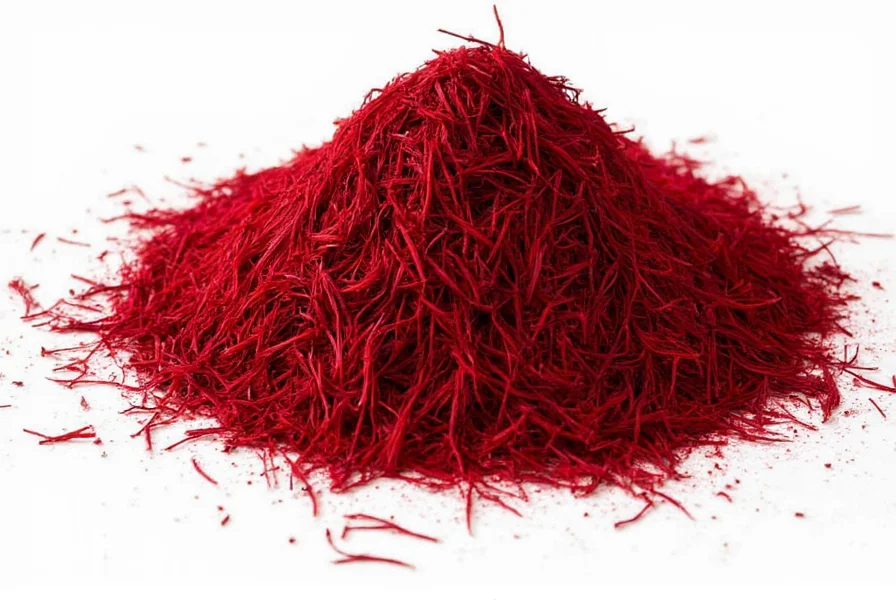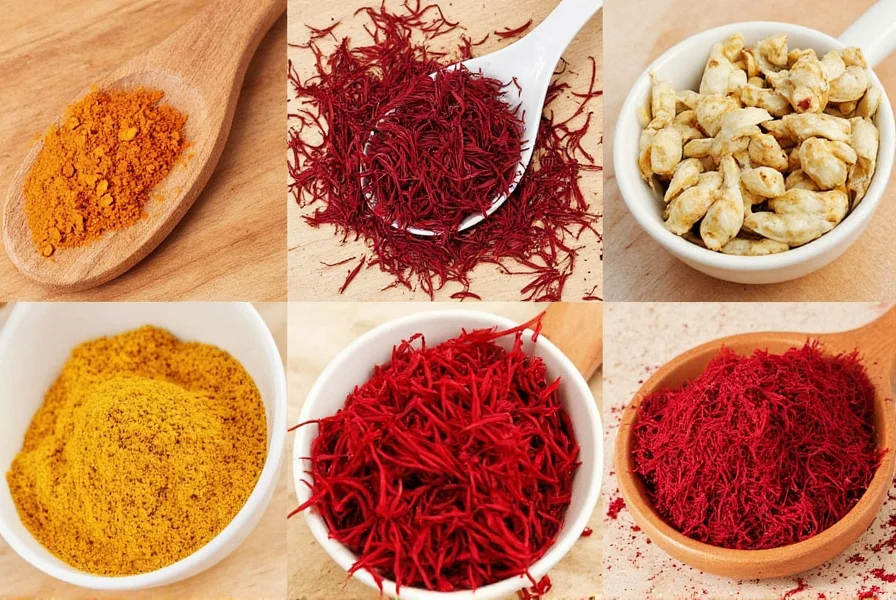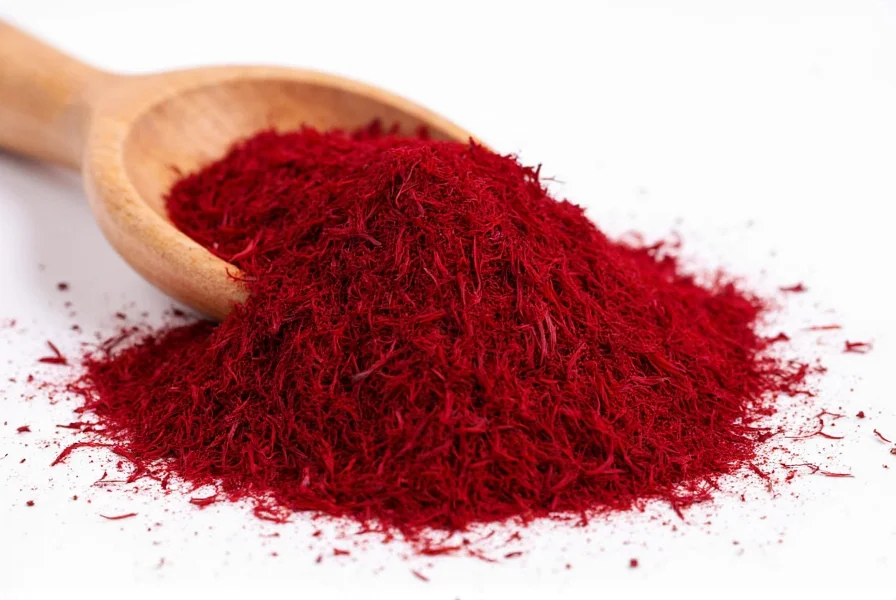When searching for saffron alternatives, home cooks and professional chefs alike face the challenge of replacing the world's most expensive spice. Saffron's unique combination of vibrant color, distinctive aroma, and subtle flavor makes finding perfect substitutes difficult, but several affordable options can effectively mimic specific aspects of this prized spice. Understanding which substitute works best depends on whether you prioritize color, flavor, or both in your culinary application.
Why Saffron Substitutes Matter
Saffron costs between $500-$5,000 per pound depending on quality, making it inaccessible for regular home cooking. This precious spice comes from the delicate stigmas of Crocus sativus flowers, requiring approximately 75,000 blossoms to produce just one pound of dried saffron. The labor-intensive harvesting process explains its extraordinary price tag. For those seeking affordable alternatives to saffron spice without compromising dish presentation, understanding proper substitutes becomes essential.
Top 5 Saffron Substitutes Compared
| Substitute | Color Match | Flavor Profile | Strength Ratio | Cost Comparison |
|---|---|---|---|---|
| Turmeric | ★★★★☆ | Earthy, slightly bitter | 1:16 (1 pinch turmeric = 16 saffron threads) | 1/100th the cost |
| Safflower | ★★★☆☆ | Mild, slightly sweet | 1:8 | 1/50th the cost |
| Paprika | ★★☆☆☆ | Smoky, sweet to hot | 1:12 | 1/75th the cost |
| Annatto | ★★★☆☆ | Earthy, slightly peppery | 1:10 | 1/60th the cost |
| Marigold Petals | ★★☆☆☆ | Grassy, mild | 1:6 | 1/30th the cost |
Detailed Analysis of Each Saffron Alternative
Turmeric: The Color Champion
Turmeric provides the closest visual match to saffron's golden hue, making it the go-to option when color matters most. When considering how to replace saffron in recipes where appearance is critical, turmeric shines in dishes like rice pilafs and golden soups. However, its earthy flavor differs significantly from saffron's floral notes. Use only a small pinch (about 1/8 teaspoon) to replace 15-20 saffron threads, as turmeric's flavor can dominate if overused. For the best results, steep turmeric in warm liquid for 10-15 minutes before adding to your dish.

Safflower: The Flavor Neutrality Expert
Safflower petals (often sold as "Mexican saffron" or "bastard saffron") offer a more neutral flavor profile while still providing a yellow-orange color. This makes safflower particularly valuable as a saffron substitute that gives similar color without dramatically altering your dish's flavor profile. It works exceptionally well in seafood dishes and light-colored sauces where you want color without strong additional flavors. Use twice as much safflower as you would saffron for comparable color intensity.
Paprika: The Flavor-Focused Option
When seeking a substitute primarily for flavor rather than color, paprika—especially sweet Hungarian paprika—provides a more complex flavor profile that can complement dishes where saffron would normally be used. This makes it an excellent choice for best saffron substitute for paella and other Spanish rice dishes. The smoky-sweet notes work particularly well with meats and robust vegetable dishes. For optimal results, combine paprika with a small amount of turmeric to achieve both color and flavor balance.
Recipe-Specific Substitution Guide
Not all saffron substitutes work equally well across different dishes. Understanding which alternative performs best for specific recipes ensures culinary success:
- Paella and Risotto: Combine 1/4 teaspoon sweet paprika with 1/8 teaspoon turmeric for the most authentic results. This combination delivers both the characteristic color and complements the dish's flavor profile better than any single substitute.
- French Bouillabaisse: Safflower provides the traditional color without interfering with the delicate seafood flavors.
- Indian Biryani: Turmeric works well here since many biryani recipes already include it, and the stronger spices mask any flavor differences.
- Saffron Breads: A pinch of turmeric combined with a few drops of rosewater mimics both color and floral notes effectively.
Pro Tips for Maximizing Saffron Substitutes
To get the most from your cost-effective saffron substitutes for home cooking, consider these professional techniques:
- Steep substitutes properly: Like saffron, most substitutes release color and flavor best when steeped in warm liquid (broth, milk, or water) for 10-15 minutes before adding to your dish.
- Adjust for acidity: Turmeric's color intensifies in acidic environments, so reduce the amount slightly when cooking with tomatoes or citrus.
- Combine substitutes: For the most authentic results, blend two substitutes (like turmeric for color and a pinch of paprika for flavor complexity).
- Add late in cooking: Heat degrades color compounds, so add your substitute during the last 10-15 minutes of cooking for maximum color impact.

Common Substitution Mistakes to Avoid
Many home cooks make these critical errors when using saffron alternatives:
- Using too much turmeric, resulting in an overpowering earthy flavor and unnatural yellow color
- Adding substitutes at the beginning of cooking rather than later, causing color degradation
- Expecting any single substitute to perfectly replicate both saffron's color AND flavor
- Not adjusting other seasonings to compensate for flavor differences in the substitute
- Using artificial food coloring without considering flavor implications
When to Consider Blending Substitutes
For the most authentic results, professional chefs often blend multiple substitutes to capture different aspects of saffron's profile. Try these combinations for specific applications:
- For paella: 1/4 tsp sweet paprika + 1/8 tsp turmeric + pinch of cayenne
- For bouillabaisse: 1/2 tsp safflower + small pinch of turmeric
- For saffron bread: 1/4 tsp turmeric + 2 drops rosewater + pinch of cardamom
- For golden milk: 1/4 tsp turmeric + pinch of black pepper + cinnamon
FAQ: Saffron Substitutes
What's the best saffron substitute for risotto?
For risotto, the best substitute combines 1/4 teaspoon sweet paprika with 1/8 teaspoon turmeric. This blend provides both the characteristic golden color and complements the dish's flavor profile better than any single substitute. Add the mixture during the last 5-7 minutes of cooking for optimal color retention.
Can I use food coloring as a saffron substitute?
While yellow food coloring can mimic saffron's color, it lacks any flavor contribution and may create an artificial appearance. For better results, combine a tiny amount of yellow food coloring with turmeric to achieve natural-looking color with some flavor complexity. Never use food coloring alone as it creates an unnatural culinary experience.
How much turmeric equals one teaspoon of saffron?
Approximately 1/16 teaspoon of turmeric equals one teaspoon of saffron threads in terms of color impact. However, flavor differs significantly - turmeric has an earthy taste while saffron is floral. Always start with less turmeric than you think you need, as it's easy to add more but impossible to remove excess.
Does safflower taste like saffron?
Safflower has a much milder flavor than saffron with only subtle floral notes. It's often called "Mexican saffron" because it provides similar color with minimal flavor interference. While it doesn't replicate saffron's distinctive taste, it works well when color is the primary concern, such as in seafood dishes or light-colored sauces where strong additional flavors would be undesirable.
Can I make my own saffron substitute blend?
Yes, creating your own blend yields the best results. Try mixing 2 parts turmeric, 1 part sweet paprika, and 1/4 part ground cardamom. Store in an airtight container away from light. This combination captures saffron's color while approximating its complex flavor profile. For dishes requiring saffron's floral notes, add a tiny pinch of dried rose petals to your blend.











 浙公网安备
33010002000092号
浙公网安备
33010002000092号 浙B2-20120091-4
浙B2-20120091-4